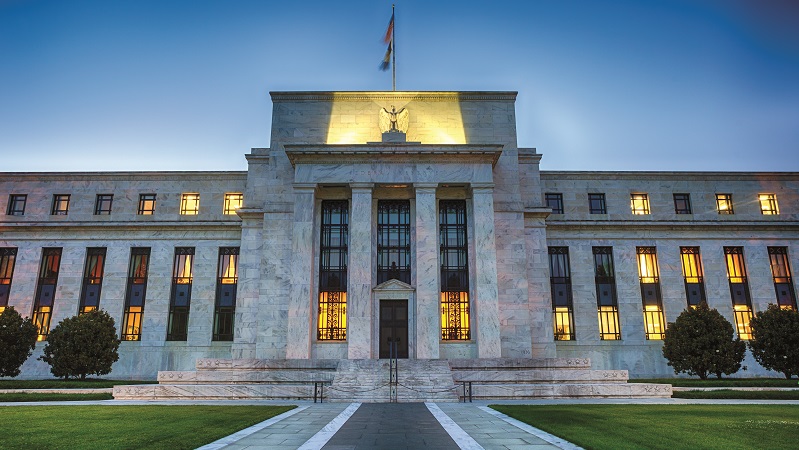The dominant concern for investors in recent weeks has been that stockmarkets are outpacing economic reality. With the Covid-19 virus still hampering the ability of businesses to operate properly, hopes for continued rises in equity markets look bullish at best. That much is undeniable but should investors be more worried about what is going on in the bond market?
The fund flow data for August has revealed the continued dominance of fixed income – albeit in the context of weaker inflows overall. Morningstar reported that fixed income saw high demand, taking €25bn (£22.7bn), although this was some way below previous months. Lipper data offered a similar picture, showing that bond funds were the best-selling individual asset type for August, taking in €19.9bn.
In the context of bond yields at record lows and significant fiscal spending packages, this preference for fixed income assets seems optimistic. Admittedly, some of these inflows were into corporate bond funds, but key categories such as USD corporate bonds were net sales negative. It is clear that a significant number of these investors are still looking to fixed income for its safe-haven properties.
Can fixed income remain a safe haven asset?
Whether fixed income can fulfil that role in a portfolio depends significantly on whether global inflation remains benign. Here, there is still considerable debate – particularly following a subtle change in the Federal Open Market Committee’s (FOMC) policy on inflation-targeting.
Shrenick Shah, head of macro strategies and portfolio manager at JP Morgan Asset Management, says: “At the most recent meeting, the FOMC said it would keep rates on hold until inflation was at 2% and on track to moderately exceed 2% for some time.”
There have been fears this could create a more inflationary environment, which translates into bad news for global bonds. Certainly, the inflation expectations built into the Treasury Inflation Protected Securities (Tips) market for 2025 to 2030 has risen from roughly 1.50% in July to 1.85% in late August.
The effect of lockdown on monetary velocity
According to Nick Maroutsos, head of global bonds at Janus Henderson, however, while this is a notable spike, it only brings things back to January’s level – well before the Fed increased the size of its balance sheet to $7trn (£5.4trn). The policy decisions since should have raised inflation expectations even higher, he suggests.
“Part of the last decade’s lack of inflation is likely explained by the steady downtrend in monetary velocity, or the pace at which it cycles through the economy,” Maroutsos notes. “That measure plummeted even further in the wake of the spring’s economic shutdown. While some spending will certainly bounce back on pent-up demand, other disinflationary forces evident over the past decade – ageing demographics, disintermediation of business and technological innovation – are not going away anytime soon.”
Nevertheless, the risk is not negligible, with JP Morgan Asset Management’s Shah pointing to a broadening of global demand. “Consumer spending led the early recovery and while this has eased somewhat, business spending has picked up some of the slack,” he points out. “There has been a strong trend for inventory rebuild and this has historically been a strong demand driver.”
What Chinese growth means for inflation
The other inflationary force may be a stronger China. JP Morgan Asset Management expects China to sustain strong levels of growth for the rest of the year, having rebounded impressively since the first quarter. The country has benefitted from the substitution effect in global markets as companies have had to find alternative options for sourcing products.
This would not be a concern if bond markets had any flexibility, but they have barely moved since their March lows. The yield on the 10-year German bund, for example, hit a new low of -0.86% in March at the height of investor concern over the pandemic. It swiftly moved to a range of -0.6% to -0.3% and has remained there ever since. Little inflation risk is reflected in the price.
Record bond issuance in Europe and the US
At the same time, there has been record issuance in the corporate bond market. NNIP notes that, over the year to date, new issues of euro investment grade corporate bonds have reached €420bn. This is already around €100bn more than the record set in 2019. US high yield issuance has been particularly buoyant as companies have raised debt to keep their businesses afloat in difficult conditions. At the same time, there has been a huge contraction in spreads – the high yield market has dropped from 1000 basis points to around 500 basis points in the US.
Fixed income has not looked like a great place to invest for some time yet it has kept surprising investors as central banks have kept loosening policy. That said, investors should not rely on this happening indefinitely. Today, it is looking like an increasingly precarious option, with low yields offering little in the way of protection and a potential inflation problem waiting in the wings.
For more insight on continental European investment, please click on www.expertinvestoreurope.com










